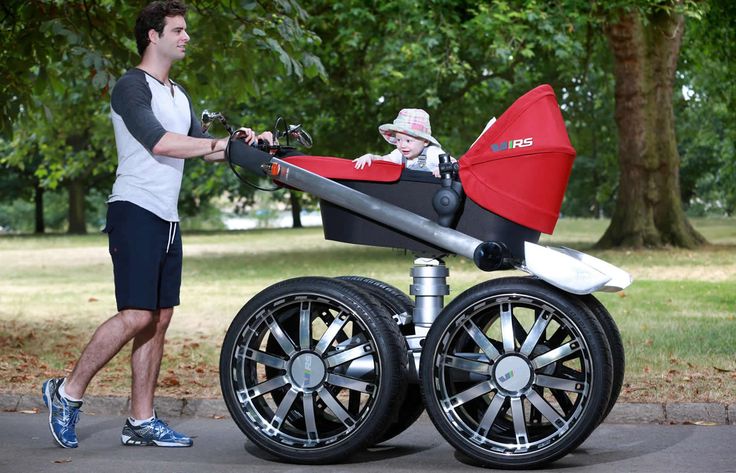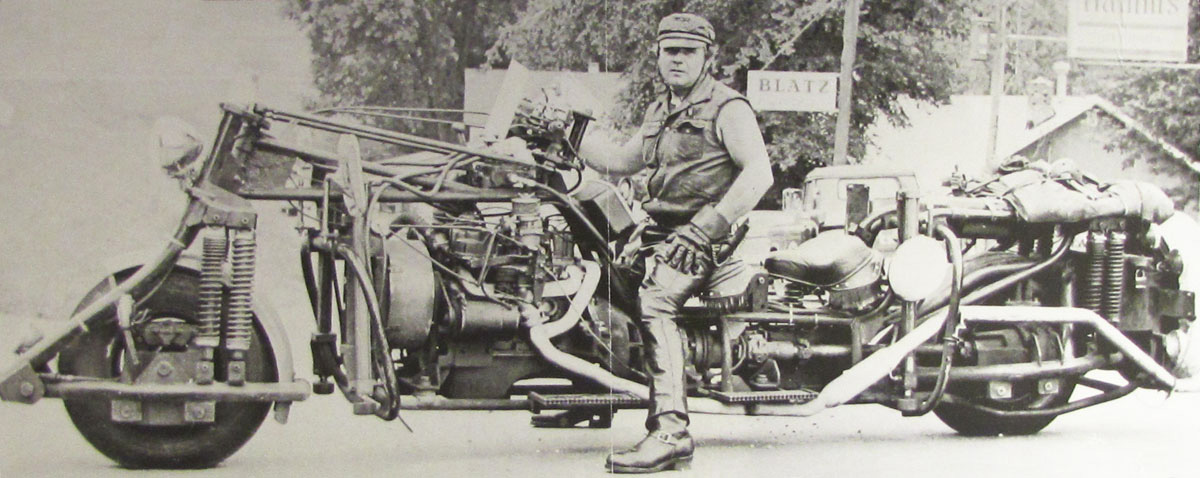First built in 1962, there were only ever two motorcycles born under the Roadog brand, both the brainchildren of “Wild” Bill Gelbke. The Roadog will either excite you or it will haunt your two-wheeled dreams forever.
The 17-foot long beast weighs over 3,000 pounds, the largest bike ever built. Sorry, Boss Hoss.
Gelbke intended to sell them at one point, even took orders, but the reality of bikes this big on the road was unfeasible. It was a simple matter of weight ratios. Namely, only a strong human could operate the Roadog.
He made a few smaller versions, but the dream ended with the death of Wild Bill Gelbke. The Roadog proves, if nothing else, that Wild Bill Gelbke was a man of vision and certifiably nuts.
Forging Gelbke

Young Gelbke in his carriage? | Pinterest
Life for Gelbke started in Green Bay, Wisconsin in 1936, the same place it ended for the man.
Some would say Gelbke was a tenacious fellow. As a boy, according to his mother, he once tried to outfit a baby carriage with a motor taken from a washing machine. Sometimes legends are louder than the truth.
What history does know of Gelbke is that he graduated with a degree in engineering in Wisconsin. After school, he moved to California where he worked as an engineer, first for McDonnell Douglas then Hughes Aircrafts in the ‘60s.
For a time, he designed surface to air missile guidance systems, but Gelbke was a curious fellow. When they wouldn’t let him see the full specs of the missiles, he left to do his own thing. National security is such a bugger.
Gelbke Bikes
After leaving the aerospace engineering industry, Gelbke opened a bike shop in Chicago in 1962. He would eventually open shops in Illinois and Indiana, but it wasn’t because he wanted to own repair shops.
Gelbke had one sinister motivation. He wanted to build a cruising bike like no other, one that could ride for long periods of time without worry or discomfort.
His creation would average 90 mph, rarely need to gas up, and only stop for posted stop signs. It would be the biggest bike on the road.
Gelbke planned to first make a prototype, then take his key learnings to make smaller versions that he could mass produce.
The Roadog
Today, riders enjoy normal-sized cruising bikes, but back then there were no comfortable big bikes. Gelbke wanted to create the first.
To do so, he would have to design many of the parts himself. They simply didn’t exist. Parts like the fork, which was similar to folks found on other bikes, but much larger. It would have to be to accommodate the load.
The powerhouse for Roadog was a four-cylinder Chevy II engine, with an automatic Powerglide transmission. The final weight of the Roadog was 3,280 pounds.
Wild Bill put some 20,00 miles on that bike with no problems, but he knew the bike. He designed it. Others might not have fared so well.
To turn the bike, one had to go at least fifteen miles per hour. Parking required four hydraulic rams to hold up the machine, but it could go far once started. Imagine stopping at stop signs, though. Imagine the bike falling over. How would one get it back up?
Gelbke did eventually produce the smaller version, the Gelbke Auto Four, smaller than the Roadog, but bigger than most large Harleys.
Production plans ended when 12 police officers descended on Gelbke’s residence over suspicions that he was trafficking marijuana. When an officer went down, either because he slipped or Gelbke shot him, a hailstorm of bullets turned Gelbke’s home into Swiss cheese, ending his life on November 17, 1978.
Today, the original Roadog lives at the National Motorcycle Museum in Anamosa, Iowa.



